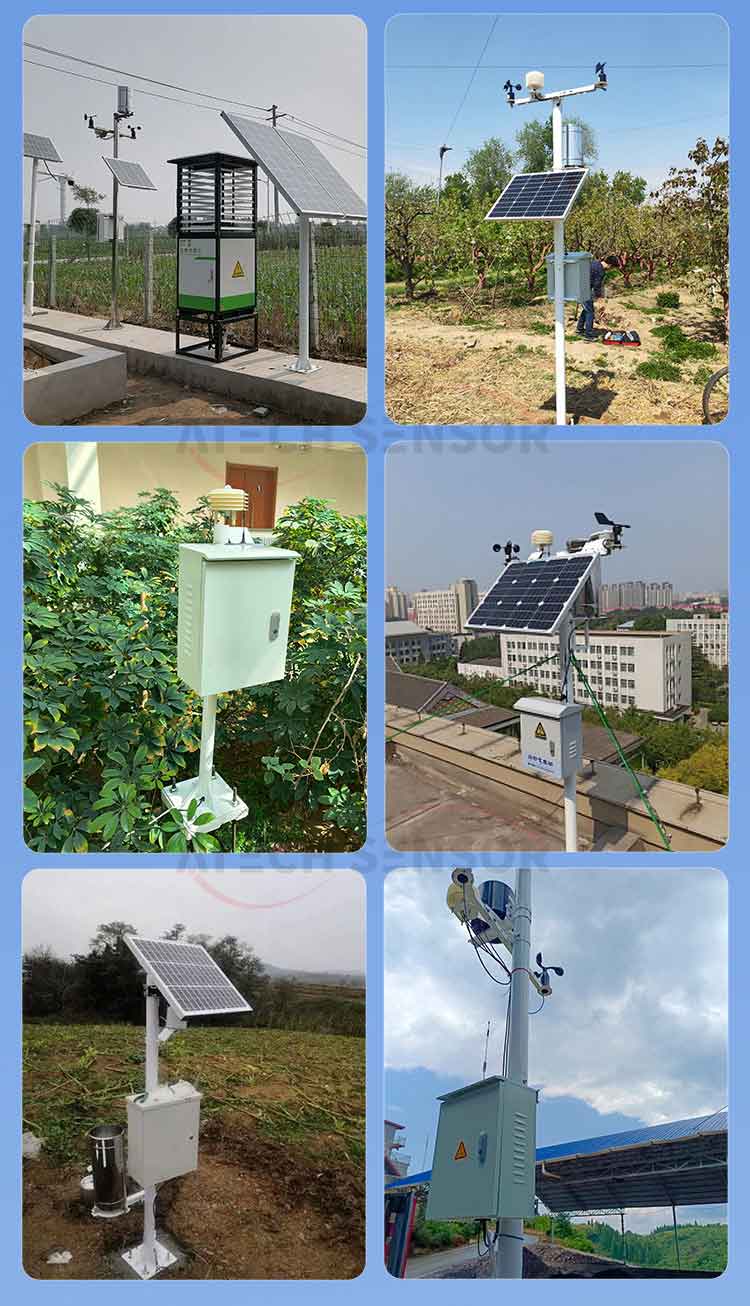Today, with the rapid development of science and technology, agriculture, as the foundation of the national economy, is undergoing unprecedented changes. Among them, agricultural automatic weather stations, as an important part of the modern agricultural technology system, are gradually becoming the guardian of smart agriculture, providing strong support for the precise management of crops, disaster warning and optimal resource allocation.

Working principle of agricultural automatic weather station:
The agricultural automatic weather station is an automated monitoring device that integrates data collection, processing, transmission and display. It monitors key meteorological elements such as air temperature, humidity, rainfall, wind speed and direction, solar radiation, soil temperature and humidity, and soil pH value in real time through various sensors installed in the fields. After high-precision collection, these data are transmitted wirelessly to the data processing center, and after algorithm analysis, intuitive and easy-to-understand meteorological information is finally generated, providing a scientific basis for agricultural production.
Functions of Agricultural Automatic Weather Stations:
Agricultural management: Based on the data provided by the meteorological station, farmers can more accurately grasp the growth environment of crops, adjust management measures such as irrigation, fertilization, pest control, etc. in a timely manner, improve agricultural production efficiency, and reduce resource waste.
Disaster warning and prevention: Agricultural automatic weather stations can warn of natural disasters such as drought, floods, frost, and hail in advance, help farmers take timely response measures, reduce disaster losses, and ensure agricultural production safety.
Crop growth cycle optimization: By analyzing meteorological data, the growth cycle of crops can be accurately grasped, and farming activities such as sowing, transplanting, and harvesting can be reasonably arranged to optimize the crop growth cycle and improve crop quality and yield.
Agricultural scientific research: The long-term accumulated meteorological data provides valuable information for agricultural scientific research, which helps researchers to deeply understand the impact of climate change on agricultural production, develop new varieties with strong adaptability and good resistance, and promote agricultural scientific and technological progress.
The significance of agricultural automatic weather stations in agricultural modernization:
Promoting the development of smart agriculture: Agricultural automatic weather stations are an important part of smart agriculture. Through intelligent and information-based means, they have achieved precision and efficiency in agricultural production management, and are an indispensable part of the process of agricultural modernization.
Promoting sustainable agricultural development: Through precise management and disaster warning, agricultural automatic weather stations help reduce excessive use of pesticides and fertilizers, protect the ecological environment, and promote green and sustainable agricultural development.
Improving agricultural production efficiency: On the premise of ensuring agricultural production safety, agricultural automatic weather stations have effectively improved crop yields and quality, increased farmers' income, and promoted the prosperity of the rural economy by optimizing crop growth environment and management measures.

